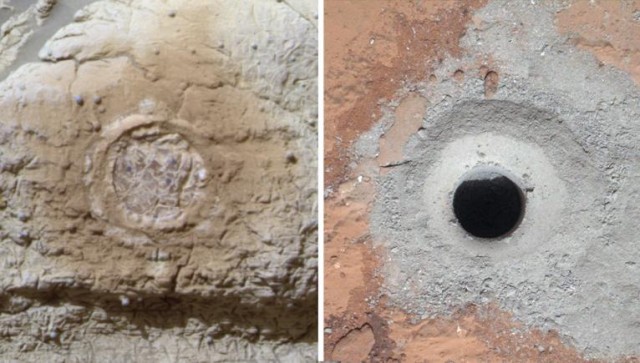Mars rock contains elements essential to life
Ars Technica » Scientific Method 2013-03-14

NASA’s Curiosity rover has cracked open a Mars rock that contained several elements necessary to life as we know it. The presence of the elements, including hydrogen, oxygen, and carbon, suggest that the planet may once have played host to a habitable environment, according to a news release and NASA press conference held on Tuesday.
The data was obtained from a sample collected and analyzed by the rover in a location on Mars called Yellowknife Bay in Gale Crater. The area was home to an “ancient river system or intermittently wet lake bed.” The site was only a few hundred yards away from where the rover collected samples of smectite, or clays that form in the presence of water, back in September 2012.
The full list of relevant elements were sulfur, nitrogen, hydrogen, oxygen, phosphorus, and carbon. Scientists noted that a mixture of oxidized, less-oxidized, and non-oxidized chemicals were present in the sample, and some of these could be favorable energy sources for some of the microbes that live on Earth. Researchers first noted the samples' distinct characteristics when they cut into the soil and found the interior to be gray, rather than Mars’ characteristic red.
Read 1 remaining paragraphs | Comments